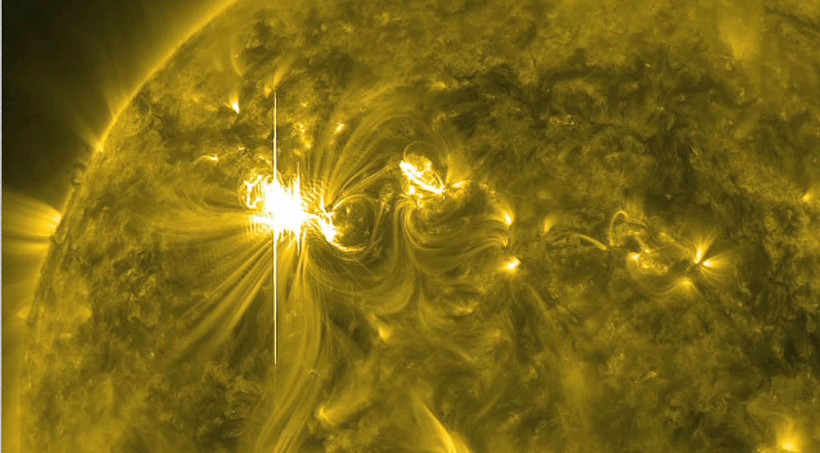Last weekend was massive for NASA as it managed to capture an X-class Solar Flare on a "SunDay," which is a good play of words for seeing this cosmic phenomenon taking place. This is a massive activity from the Sun, as it shows the gigantic ball of lava in space spewing its flares throughout its region, in a time-lapse captured by the agency.
Solar flares happen from time to time, and it does not highly affect the Earth and humans who are present when they come, with only several effects on natural processes on the planet.
NASA Captures an X-Class Solar Flare from the Sun

(Photo : NASA/Solar Dynamics Observatory (SDO) via Getty Images)
NASA released a video via Twitter that shows a time-lapse of the recent X-class solar flare which the humongous star released last Sunday. It shows the Sun in all of its majestic glory, with its bright yellow color shining to the world, along with the powerful bursts which were captured by the space agency.
The Sun's latest solar flare is rated on the strongest class present in NASA's scale, with a significant number of 36 solar flares in this event.
NASA said that it also delivered 28 coronal mass ejections (CME) which presents a significant release of plasma and magnetic field.
Notably, this solar flare from the Sun, despite it being in the strongest class, did not exhibit any geomagnetic storms in the process.
Read Also: Sun's Canyon-Like Coronal Hole to Emit Solar Flare; When It Will Hit Earth, Severity, Other Details
Happy #SunDay! This week’s space weather report includes 36 notable solar flares, 28 coronal mass ejections, and no geomagnetic storms. This video of the Sun from NASA’s Solar Dynamics Observatory includes an X-class solar flare (the most powerful kind of flare) at 0:44. pic.twitter.com/u7YEyGMhND
— NASA Sun & Space (@NASASun) February 19, 2023
What Does an X-Class Solar Flare Mean?
According to NASA, an X-class solar flare is equivalent to a million hydrogen bombs exploding at the same time, and this rate is the strongest in the class of the Sun's activities.
This happens when magnetic fields cross each other over at the big star's surface.
However, there should be no fears about this event, especially as it does not bring significant effects on human lives, but mere disruptions that return to normal after some time.
The Sun and its Solar Flares
There are specific studies behind the Sun, as well as its activities in the galaxy, particularly as to how it will affect life on the planet, and those staying in the orbit. NASA and other space agencies monitor solar flares and the events it causes, and while it is not fatal to life as we know it, there are still significant effects they may bring to all.
A strong solar flare may result in knocking out radio communications in different parts of the world, particularly those in open areas which would most likely be a target of these.
It produces bursts of electromagnetic radiation which means that GPS. satellites and other electronic or electric facilities may also be affected.
Some of the most affected industries would be the ones in the low-Earth orbit, with the International Space Station bearing witness to what it brings. Solar flares may also disrupt the apparatus of planes on high-altitude flights.
The recent X-class solar flare is a reminder that the Sun has different natural processes that exhibit now, but this does not mean that it threatens the world to extinction, only in specific industries.
Related Article: [WATCH] Sun's Strong Solar Flare Knocks Out Shortwave Radio in Pacific Ocean










